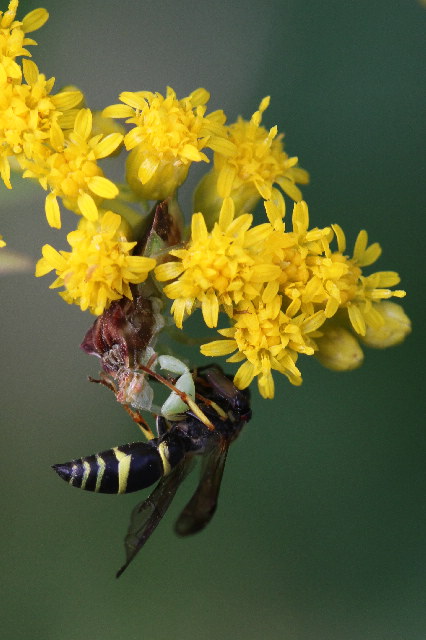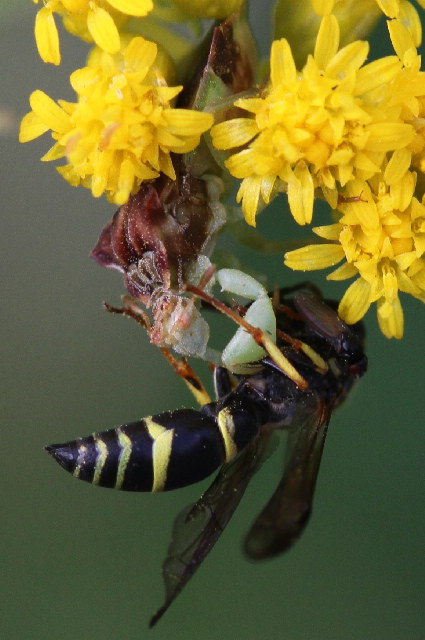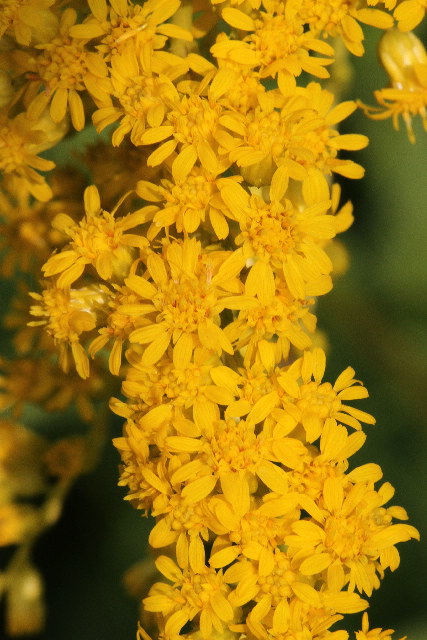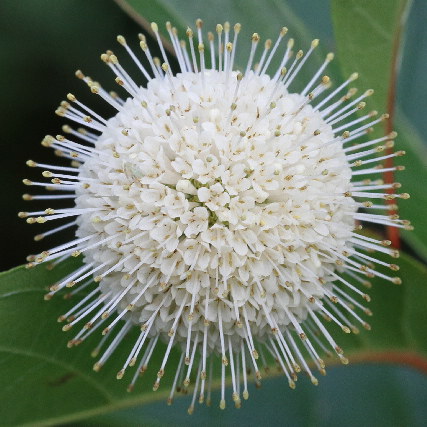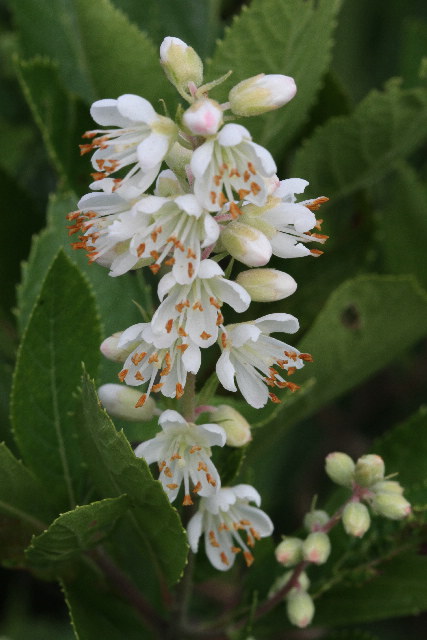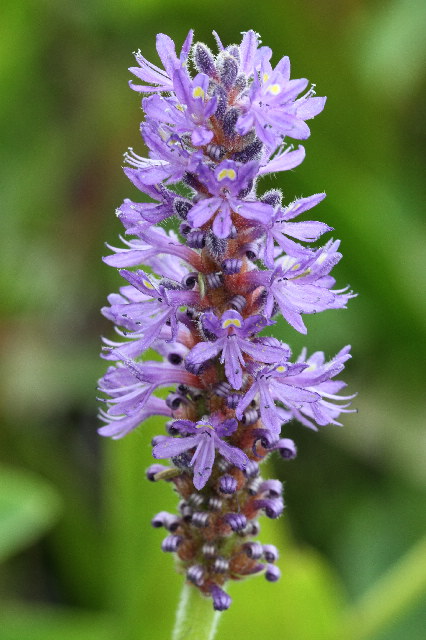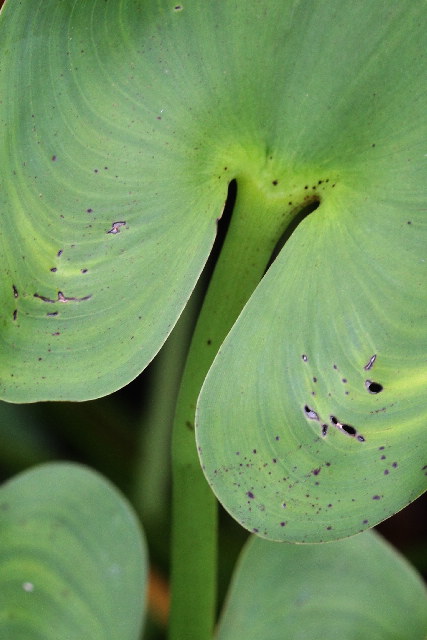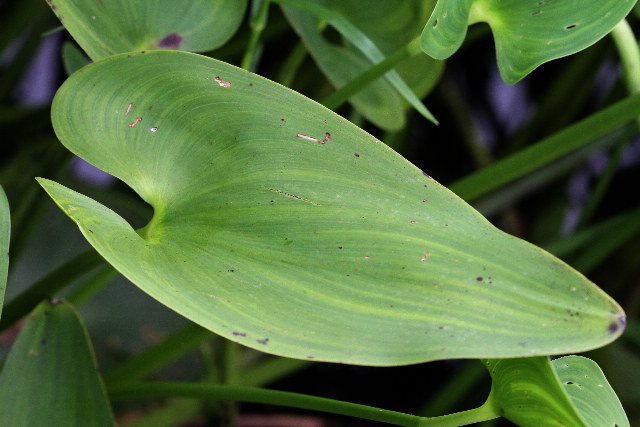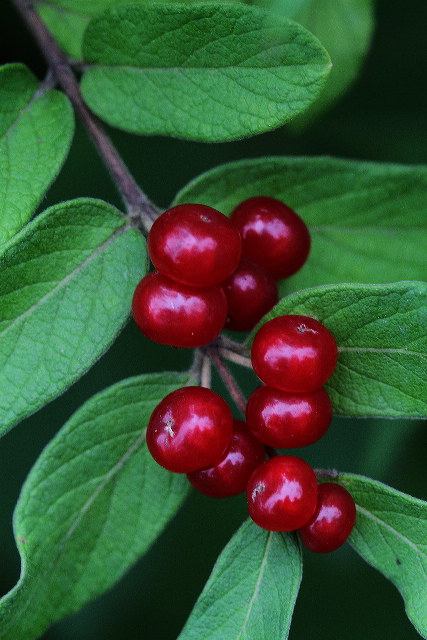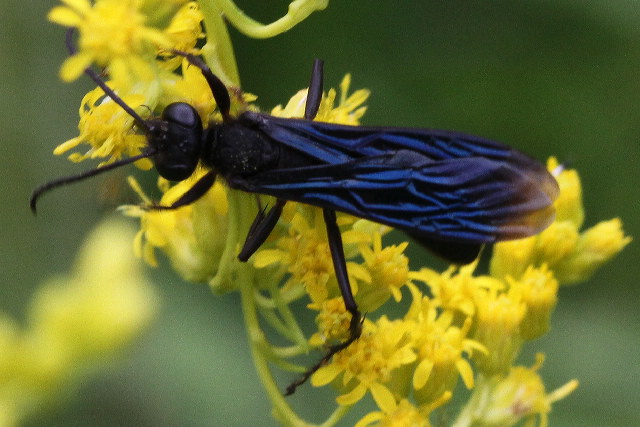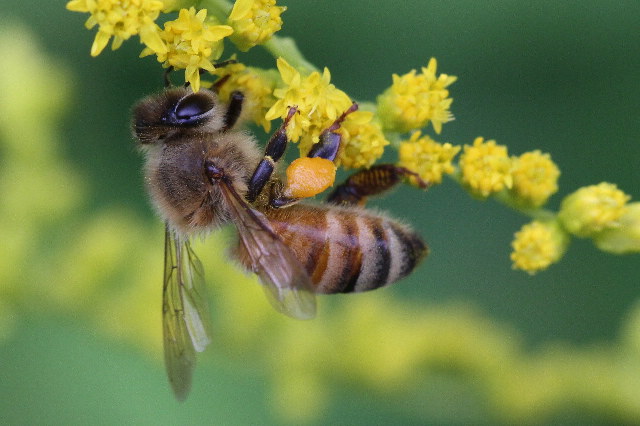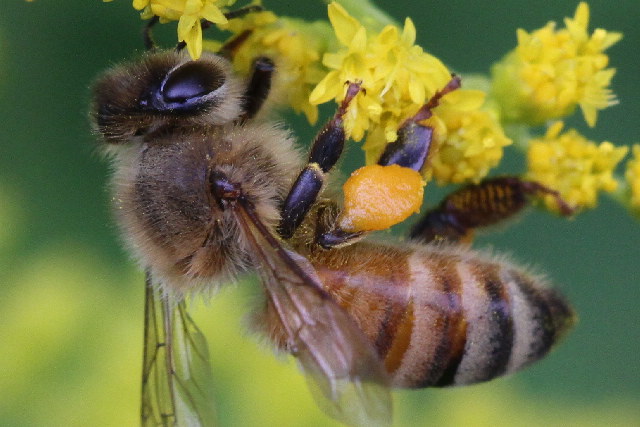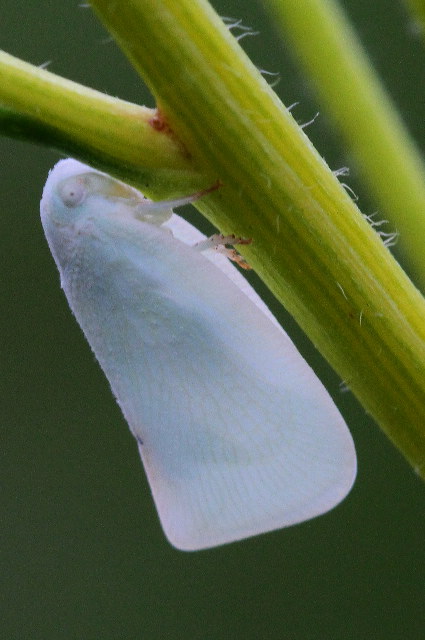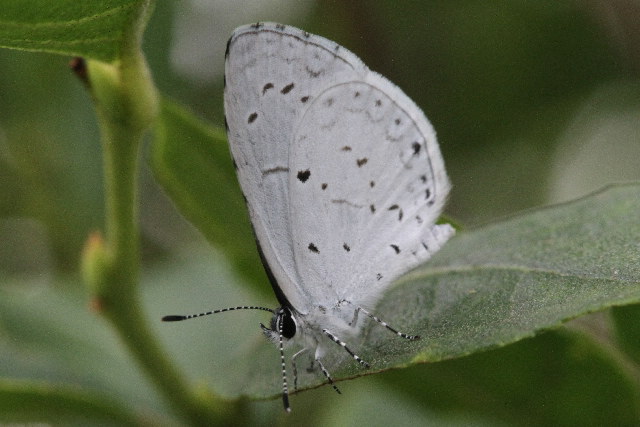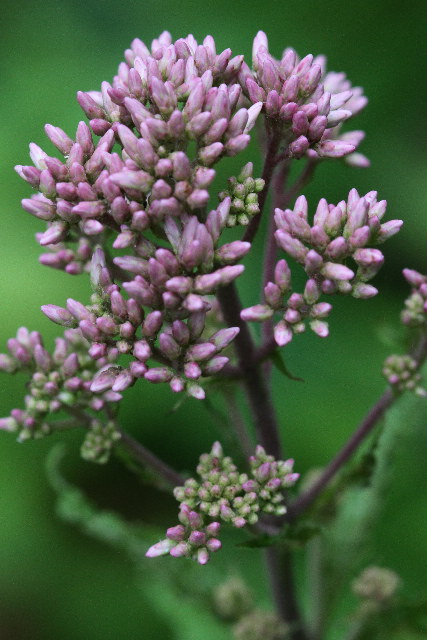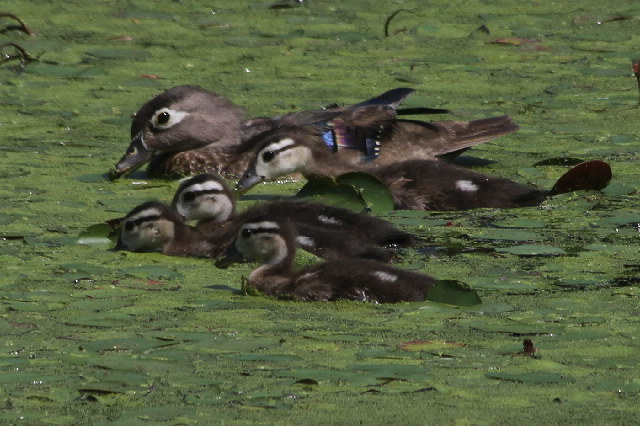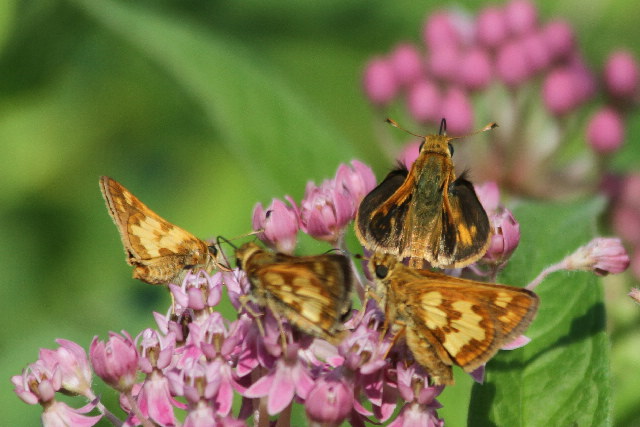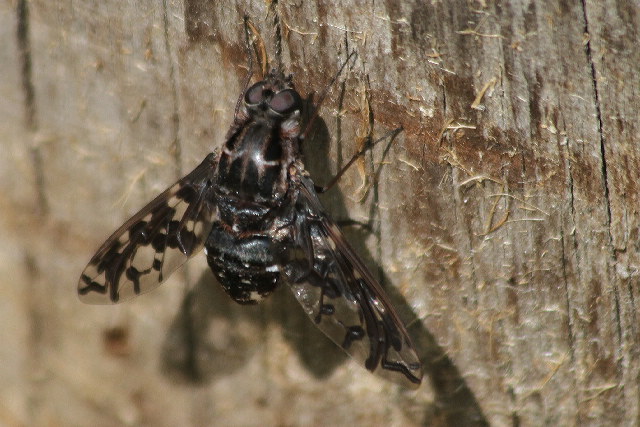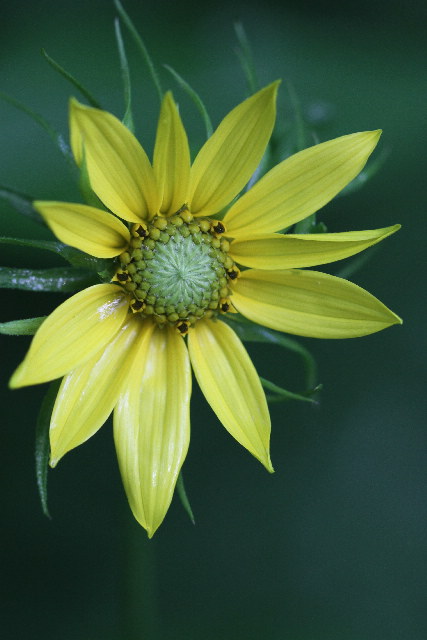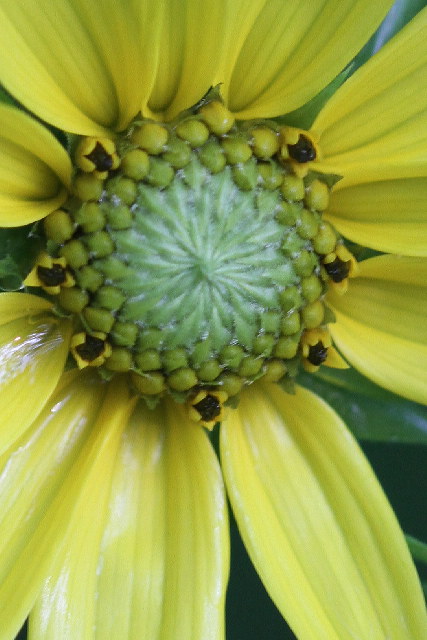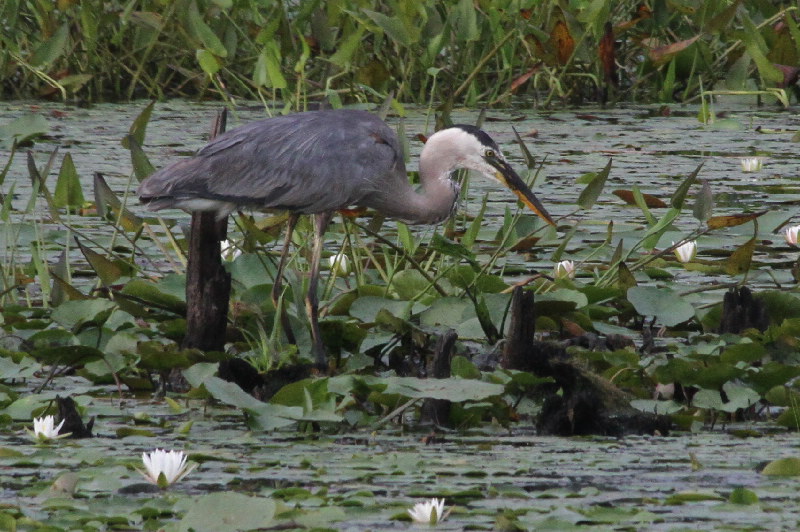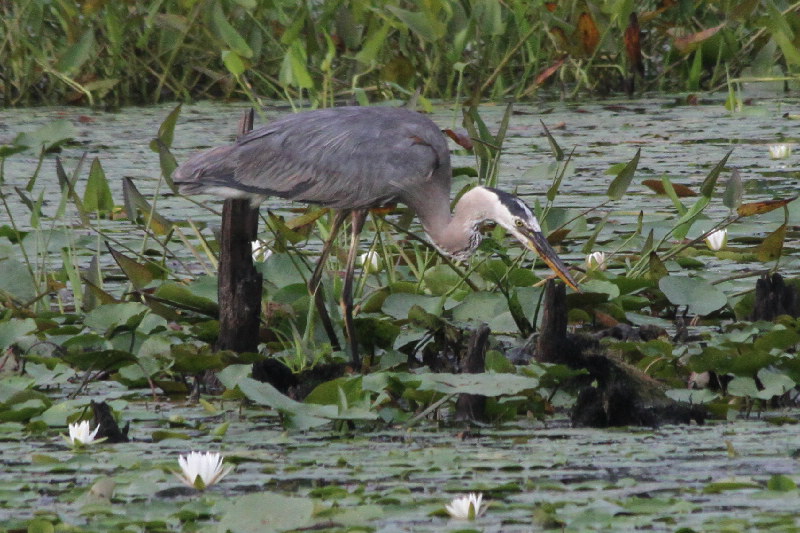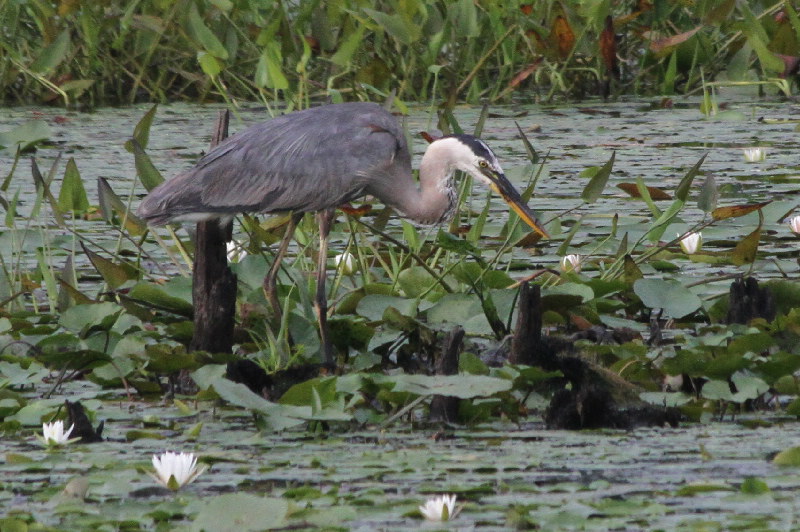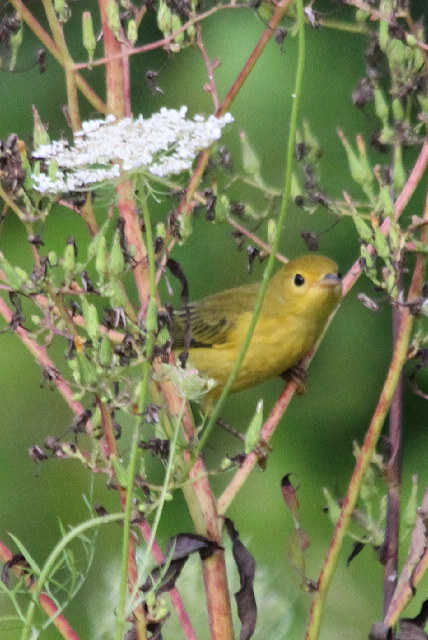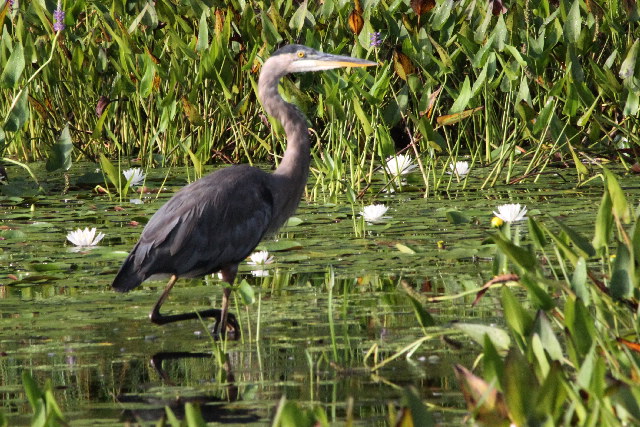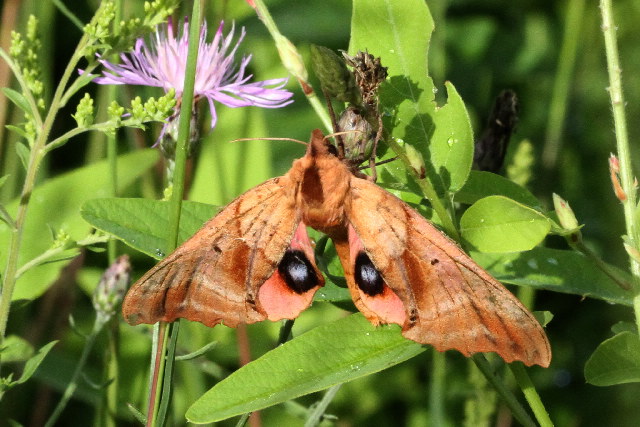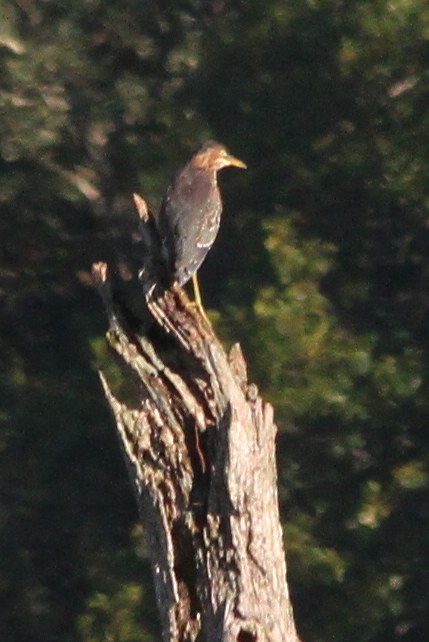Along the Air Line... 2010 - Summer, Part 3 The Air Line Trail in Eastern Connecticut - Stan Malcolm Photos |
mHome Page Stan's FlickR Albums |
July 16th, afternoon. While lurking amid Goldenrod blossoms, this Ambush Bug (Phymata sp.) has captured a wasp. |
The bug's beak has been inserted into the wasp's thorax and is extracting the wasp's pre-digested tissues. |
Goldenrod (Solidago sp.) flowers are as pretty up close as the entire inflorescence is from a distance. |
Buttonbush (Cephalanthus occidentalis) looks like something from outer space. |
|
Summersweet (Clethra alnifolia) lives up to its name. It's very fragrant. |
July 17th. Evening Primrose (Oenothera biennis). |
July 20th. Pickerelweed (Pontederia cordata). |
Pickerelweed has marvelously sculpted, sinuous leaves. |
|
Morrow's Honeysuckle (Lonicera morrowii) berries have ripened. |
European Cabbage Butterfly or Cabbage White (Pieris rapae). |
A Sphecid Wasp (Family Sphecidae). |
Honey Bee (Apis mellifera). |
Note the harvested pollen mass on the hind tibia. |
Northern Flatid Planthopper (Anormenis chloris). |
Either a Summer Azure (Celastrina neglecta) or a Cherry Gall Azure (Celastrina serotina). |
Joe-Pye-weed (Eupatorium sp.). |
July 21st. A Wood Duck (Aix sponsa) family at Cranberry Bog. "Dad" doesn't hang around. |
|
Peck's Skipper (Polites peckius) on Swamp Milkweed (Asclepias incarnata). |
A Bee Fly (Family Bombyliidae). |
July 24th. The first Woodland Sunflower (Helianthus divaricatus) is opening. |
|
A male Wood Duck (Aix sponsa). For best movie viewing, select full screen and then 720P (HD). |
Great Blue Heron (Ardea herodius). |
|
|
|
July 25th. A female Yellow Warbler (Dendroica petechia) gleaning insects from Queen Anne's Lace (Daucus carota). |
This Great Blue Heron allowed me to watch as it hunted and groomed. |
For best movie viewing, select full screen and then 720P (HD). |
For best movie viewing, select full screen and then 720P (HD). |
Small Bullhead Catfish (Ameiurus nebulosus) aggregate at the marsh surface in shallow water. You can see their barbels trailing on the surface. In parts of this clip you can see their bodies below. Occasionally, they seem to startle and dive in unison. After a few moments, they begin to resurface. |
A Blinded Sphinx moth (Paonias excaecatus). The eye-spots on the hind wings are revealed if the moth is disturbed, presumably resulting in a startle response from predators - giving the moth a shot at escape. |
July 27th. One of three Green Herons (Butorides virescens) that flew together through the marsh this morning. A family? (Too distant to distinguish adults from juveniles.) |
